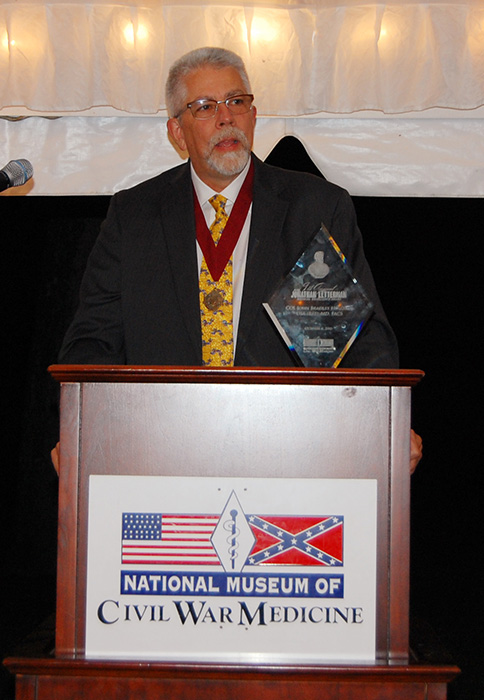Resuscitation, Retro-Style: Saving Lives with Whole Blood

"You add up the years and you learn a few things," said retired Army Col. John Holcomb during a presentation on blood products at the U.S. Army Medical Materiel Development Activity on Oct. 6. "But, most of all, you learn that minutes really do count."
For Holcomb, all those minutes spent fighting and fixing traumatic injury add up to more than three decade's worth of contributions as a Soldier, a surgeon and a scientist. Following multiple service deployments and a stint as the head of the U.S. Army Institute of Surgical Research in San Antonio, Texas, Holcomb took a position at the University of Texas Medical School at Houston, where his adaptation of combat skills to a contemporary domestic setting have yielded a number of positive benefits.
"We've been able to reduce the number of trauma deaths at our hospital by 30 percent just by applying the skills I learned in the military," said Holcomb, in town to receive the Major Jonathan Letterman Medical Excellence Award as judged by the National Museum of Civil War Medicine. "Things like using tourniquets and using whole blood - none of that crystalloid or clear liquid."
The latter may be Holcomb's most important contribution to civilian resiliency. During his presentation to assorted U.S. Army Medical Research and Materiel Command staff members, he was quick to explain how whole blood 'which up until recently had been the gold standard for battlefield resuscitation' was once again becoming the top choice for trauma surgeons.
"We made a big mistake in the 1970s by relying too much on crystalloids and components, and things that cause side effects like edema," said Holcomb. "By returning to whole blood, we're back on the right track."
"This is the kind of important information we need to consider as we try to change the impact of trauma on the American public," said Combat Casualty Care Research Program Director Col. Todd Rasmussen, who attended the presentation with his staff.
Given that trauma is the number three overall cause of death in the U.S., and that it further accounts for more than $580 billion in health care costs annually, that kind of "back to the future" approach could be the key to saving lives across the country.
"Whole blood has a higher value to the patient, a higher efficacy to us and decreased cost overall," said Holcomb. "Let's get ahead of this."














